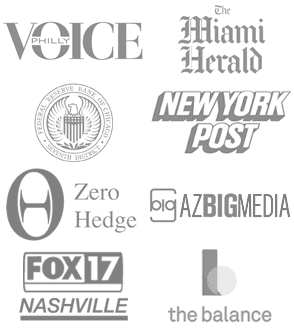In 2025, many first-time house buyers have limited resources. One proven financial tool that is the Mortgage Interest Credit, often referred to as the Mortgage Credit Certificate (MCC) program. This federal tax credit, administered through state or local housing finance agencies (HFAs), provides eligible homeowners with a direct reduction in their federal income tax liability based on a portion of their annual mortgage interest payments.
Unlike the standard mortgage interest deduction, which requires itemizing on Schedule A and is limited by income and tax brackets, the MCC offers a dollar-for-dollar credit, making it a powerful incentive for affordable housing. As housing prices continue to climb—with national medians around $428,700 and rates stabilizing near 6.5-7%—programs like the MCC are crucial for bridging the affordability gap. The RefiGuide will explore the advantageous of mortgage interest credit and reveal who is eligible for the MCC benefits.
What Is Mortgage Interest Credit?
The Mortgage Interest Credit is a valuable tax benefit designed to help lower-income and first-time homebuyers reduce their federal tax liability.
It is available to those who receive a Mortgage Credit Certificate (MCC) from a state or local housing agency, typically when using a government-backed mortgage program.
The credit allows qualified homeowners to claim a percentage—usually between 10% and 50%—of the mortgage interest they paid throughout the year as a direct credit on their federal tax return.
Unlike a deduction, which reduces taxable income, a credit directly reduces the amount of tax owed. For example, if you paid $8,000 in mortgage interest and received a 20% MCC, you could claim a $1,600 tax credit.
This credit is especially helpful during the early years of a mortgage when interest payments are highest. It’s important to note that the remaining interest not claimed for the credit may still be deductible, subject to IRS rules. Homeowners must file IRS Form 8396 to claim the credit each year. Since eligibility and availability vary by state and program, prospective homebuyers should check with their local housing authority or mortgage lender to see if they qualify for the MCC program and how to apply.
What Is a Mortgage Credit Certificate?
The MCC program, established under the Tax Reform Act of 1984, aims to make homeownership more accessible for low- to moderate-income families, particularly first-time buyers. It allows qualified participants to claim a tax credit of 10% to 50% of their annual mortgage interest, capped at $2,000 per year, depending on the issuing agency’s guidelines. For example, if a borrower pays $10,000 in mortgage interest annually and their MCC rate is 20%, they receive a $2,000 tax credit, reducing their federal tax bill directly. This credit is claimed using IRS Form 8396 and can be carried forward for up to three years if not fully utilized in the current tax year.
Importantly, the MCC is non-refundable but can reduce taxes to zero, and any remaining deduction for the non-credited interest portion is still available on Schedule A. Eligibility for the MCC varies by state but generally targets first-time homebuyers—defined as those who haven’t owned a home in the past three years—or buyers in targeted areas. Income limits are set at 80-140% of the area median income (AMI), depending on family size and location; for instance, in Michigan, it’s often around $100,000 for a household of four. Purchase price caps also apply, typically aligned with FHA loan limits ($524,225 in standard areas, up to $1,209,750 in high-cost regions). Applicants must use the home as their primary residence and complete a homebuyer education course. The certificate is issued at closing and remains valid for the life of the loan, provided the borrower doesn’t refinance without reapplying or move.
The benefits of the MCC are multifaceted. Primarily, it lowers effective housing costs by putting money back in borrowers’ pockets annually, potentially saving thousands over the loan term. For a $300,000 loan at 6.5% interest, annual interest might be $19,500 in the first year; a 20% credit yields $3,900, though capped at $2,000. This can make monthly payments more manageable, especially for those with tight budgets. Additionally, MCCs can be combined with down payment assistance programs, FHA, VA, or USDA loans, enhancing overall affordability. In 2025, with economic uncertainties and high rates, such incentives are vital for stimulating home sales in underserved markets.
Applying for an MCC involves working with an approved lender or HFA. Start by checking your state’s program—e.g., Florida offers up to 50% credit, while Iowa caps at 20%. Submit an application alongside your mortgage, providing income verification, tax returns, and proof of first-time status. Fees range from $300-800, often rolled into closing costs. Approval adds little time to the process but requires careful tax planning, as the credit reduces the deductible interest amount.
While the MCC focuses on tax relief for interest, homeowners often explore mortgage credit lines to access equity for other needs. These products, secured by the home, provide flexible funding but come with interest costs that may or may not be deductible under IRS rules (e.g., for home improvements). Below, we list the top 5 mortgage credit lines in 2025, ranked by popularity, flexibility, and accessibility based on current market trends.
Top Mortgage Credit Lines in 2025
HELOC (Home Equity Line of Credit): HELOCs provide revolving credit, allowing draws as needed during a 5-10 year period, with variable rates starting at 8.26% in 2025. Top lenders offer up to 95% LTV with minimal fees. Flexible for renovations or emergencies, they require interest-only payments initially but can fluctuate with prime rates. We will help you uncover no-doc option suit self-employed borrowers. Drawbacks include potential rate hikes, but tax deductions apply for home-related uses.
Fixed Rate HELOC: Unlike HELOCs, home equity loans deliver a fixed lump sum with set rates (7-10%) and terms (5-30 years), perfect for one-time needs like home improvements. In 2025, The RefiGuide rates PNC and West Capital Lending highest for low fees and quick closings. Up to 90% LTV, they offer predictability but higher upfront costs ($1,000-5,000). Ideal for credit scores 620+, with interest deductible if used for the securing property. We can help you find niche home equity lenders that provide non-QM and prime-rate versions for unique situations.
DSCR HELOC: Tailored for investors, DSCR HELOCs approve based on property cash flow (Debt Service Coverage Ratio ≥1.0-1.25), not personal income. The RefiGuide ranks the top DSCR lenders in 2025 with rates 8-12% for rental properties, allowing draws without refinancing the first mortgage. Up to 75% LTV on investment homes, they’re flexible for portfolio expansion but carry higher rates and fees. No tax deductions for personal use, but business expenses may qualify. We recommend thus credit line for landlords with strong rental income.
Hard Money HELOC: These short-term, asset-based lines from private lenders offer quick funding (1-2 weeks) with rates 12-18%. In 2025, they’re popular for flips or rehabs, with minimal credit checks (focus on property value) and up to 70% LTV. High fees (2-5 points) and balloon payments make them expensive, but ideal for bad credit or urgent needs. Interest may be deductible for investment purposes.
2nd-Mortgage: A second mortgage line of credit is a broad category encompassing any loan subordinate to the primary mortgage, secured by the home’s equity. In 2025, with average equity at $200,000 per household, these home equity loans offer lump sums up to 85% LTV, with rates around 7-9%. Ideal for debt consolidation or large expenses, they feature predictable payments but risk foreclosure if defaulted. Benefits include tax-deductible interest for qualified uses, making it a stable option for borrowers with good credit (680+).
These credit lines complement the MCC by leveraging equity, but borrowers should weigh risks like variable rates and liens. In 2025, consulting a financial advisor is key to integrating tax credits with borrowing strategies for optimal homeownership.

